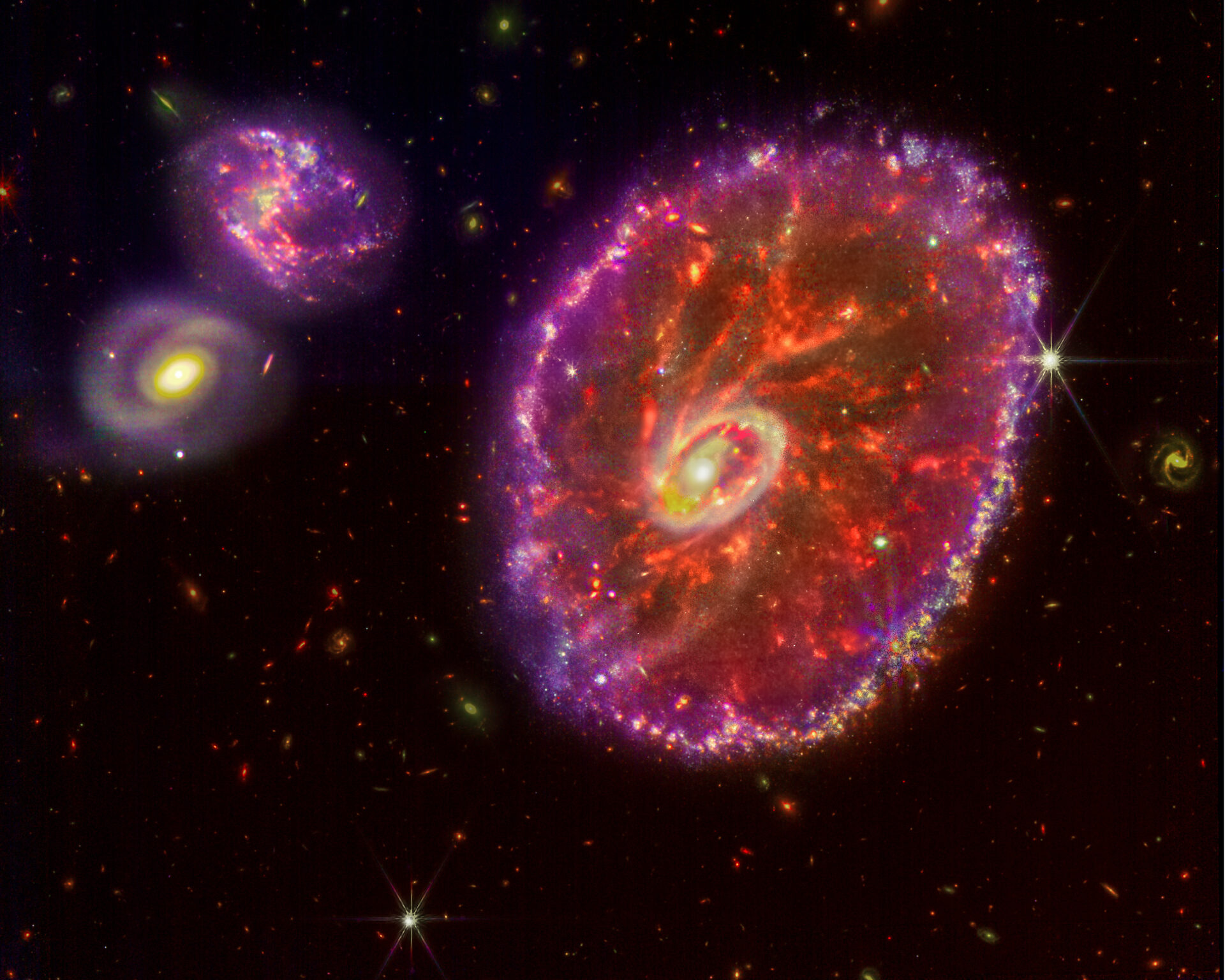Optics: James Webb Space Telescopes
Mount: JWST
Camera: Near IR Camera(Nircam), Medium Infrared camera(MIRI)
Filters: JWST Nircam(444w, 277w, 150w)), MIRI(770w, 1000w, 1800w)
Dates/Times: July 2022
Location: Lagrange Pt 2
Exposure: various
Acquisition:Downloaded raw FITS images for each filter from the MAST website
Processing: Stretching done using FITS Liberator, and separte RGB images from the Nircam and MIRI cameras were created in MaximDl. Blending these two images together and color balancing, brightening, sharpening, and noise reduction were done in PS2022. The noise reduction was done with Topaz Denoise AI.
PGC 2248 Cartwheel Galaxy
Original price was: $65.00.$52.50Current price is: $52.50.
Cartwheel Galaxy PGC 2248:The Cartwheel Galaxy, located about 500 million light-years away in the Sculptor constellation, is a rare sight. Its appearance, much like that of the wheel of a wagon, is the result of an intense event – a high-speed collision between a large spiral galaxy and a smaller galaxy not visible in this image. Collisions of galactic proportions cause a cascade of different, smaller events between the galaxies involved; the Cartwheel is no exception.The collision most notably affected the galaxy’s shape and structure. The Cartwheel Galaxy sports two rings — a bright inner ring and a surrounding, colorful ring. These two rings expand outwards from the center of the collision, like ripples in a pond after a stone is tossed into it. Because of these distinctive features, astronomers call this a “ring galaxy,” a structure less common than spiral galaxies like our Milky Way.The bright core contains a tremendous amount of hot dust with the brightest areas being the home to gigantic young star clusters. On the other hand, the outer ring, which has expanded for about 440 million years, is dominated by star formation and supernovas. As this ring expands, it plows into surrounding gas and triggers star formation.This image is a composite of two images, one taken with Webb’s Nircam which covers wavelengths from 0.6u to 5 u and the blue in the image showing areas of stars comes largely from the Nircam. The second image was done by the MIRI camera covering mid range wavelengths from 7.70u to 18.0u. Its longer wavelengths probes deeper into the Cartwheel Galaxy rich in hydrocarbons and other chemical compounds, as well as silicate dust, like much of the dust on Earth. These regions form a series of spiraling spokes shown in red and orange that essentially form the galaxy’s skeleton.
This image was done by Michael Adler from data from the Mikulski Archive for Space Telescopes(MAST).


